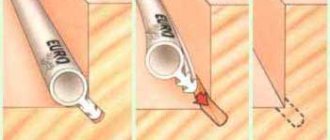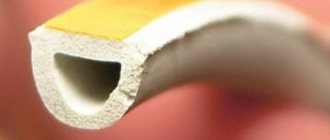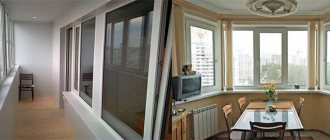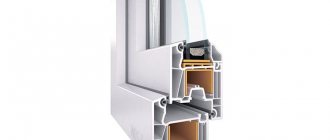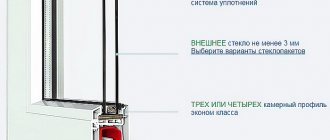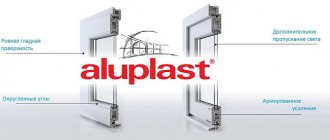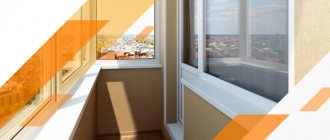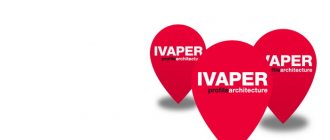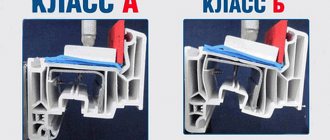Specificity and characteristics
The adjoining profile, as a rule, is equipped with a reliable fiberglass meshglued to the additional shelf. Reinforcing mesh allows you to reliably fix the plaster liquid on the slopes and virtually eliminate the occurrence of cracks, visual irregularities and shedding of plaster, in particular, located in the critical zones of the profile abutment.
High-quality plastic is a good-quality agent for stable sealing and solid sealing of all assembly joints on window structures. The adjoining profile - in contrast to the roll-and-tape sealants - is the more popular product for plastering slopes.
Characteristics:
- made of impact and weather resistant alkali resistant PVC;
- has a protective strip and a universal self-adhesive seal;
- resistant to UV rays;
- vapor barrier and waterproof;
- lightweight and easy to install, cut with scissors.
Plastic slopes
- In order not to scratch the windows and sill, do not remove the protective film from them until you finish the work.
- Plastic is a fairly flexible material. Therefore, you need to give it rigidity and make a frame, and then attach a plastic panel to it. For the construction of the frame, nail wooden slats along the perimeter of the slope.
- Secure the starter strip around the outer perimeter of the window opening. To do this, use self-tapping screws.
- Next, you need to fill in the F-shaped strip. Mark the slope height and cut off the excess.
- Secure it using a stapler, but only at one of the two parallel ribs.
- Place the plastic panel on the starter strip at the far edge of the opening. Place cotton wool over it and secure the plastic.
- To get rid of uneven joints, coat with white silicone.

When installing plastic windows, do not forget about the slopes. This element plays a significant role, because it is not an ordinary decor, the slopes retain heat and also insulate you from the noise outside. Responsibly treat such an important matter, carefully choose which slopes are suitable for you, do everything conscientiously and they will not only please the eye, but also be useful in any home.
Scope of use
Depending on the type, window adjoining profiles are used in the finishing process slopes of the outer and internal type... They are effective in creating precise and high quality plaster adhesion around the entire perimeter of the slopes. Mostly self-adhesive abutting profile is used for:
- plastering door as well as window slopes at the junction with door and window blocks, serves as an effective beacon of 6 or 9 mm (depending on the thickness of the plaster layer);
- plastering work in the places where the profile adjoins other facade materials.
Adjacent window profile on the outer window slope
How to make slopes on windows with your own hands
Nowadays, not everyone has the opportunity to hire a master to do this job. In such a situation, the owner himself must take care of the unfinished windows. But it is worth considering that different types of slopes require different installation, so follow the steps from the list below.
Plaster slopes
- Windows should be closed to avoid dust, dirt and other small particles.
- Before you start, you should take care of protecting the new window. Cover the window with tape or masking tape. Cover the window sill with thick paper or plastic wrap.
- Remove unnecessary plaster from the window opening. For use a puncher or hammer and chisel. Next, you need to cut off the unnecessary polyurethane foam.
- Clean everything from dust and treat with deep penetration soil.
- For insulation, glue a 20-30mm thick foam panel.
- For plaster, special ready-made mixtures are suitable, the basis of which is gypsum or cement binders.
- Apply the mixture with a medium-sized spatula using large strokes.
- Take a trowel wider than the width of the slopes and clean up the excess mortar.
- Fill the entire space with the solution, then make the surface even, but you do not need to make the plane perfectly smooth at this stage.
- After the plaster has dried, it is worth starting the putty.
- Apply the mixture directly to the trowel and work firmly against the flat surface. The approximate angle for this should be 45 degrees.
- Wait until the putty is completely dry.
- Sand it using a special mesh or sandpaper.
- Prime, and then paint the slopes in the color you like.
Plasterboard slopes
There are two ways to install such slopes:
- Landing on glue
- Clean the window with a stiff brush or paintbrush. This is done to better adhere to the glue.
- It is necessary to prime the surface.
- Measure the window and cut out the desired piece from the drywall.
- Apply glue to the part you are going to glue. This should not be done in a dense layer, but to leave free space so that the glue can flow freely after you press the element.
- Slopes at the top of the window may fall off before the glue dries. To avoid this, fix the part with wooden slats or beams. To do this, rest one end of the rail against the slope, and the other against the window sill or on the floor.
- Frame mounting
Nowadays, most plastic windows are most often made on the basis of frames, in which the installation of a special profile is provided, to which the slopes will be attached.
Install the profile into the groove on the frame.
- Insert the part you cut from the drywall.
- Next, along the outer edges, attach the drywall to the edge of the wall. To do this, use screws or glue.
- Fill the void between the drywall and the window opening with polyurethane foam.
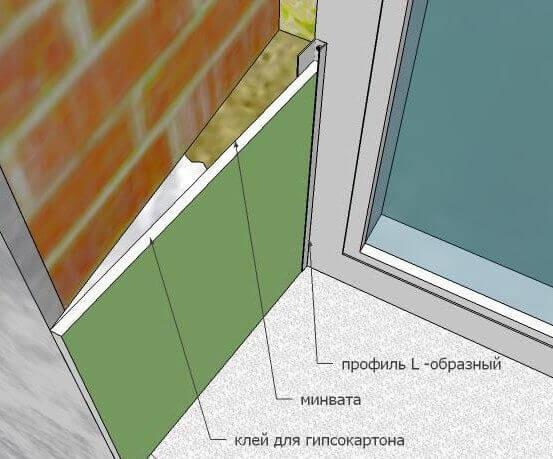

Advantages and profile installation
The main advantages of the adjoining bar of the above type are:
- a budget option;
- fast and convenient finishing;
- prevention of cracks between the plaster layer and window or door blocks;
- providing high-quality protection against weather influences and vapors;
- preservation of the heat-insulating functions of the joints: reduction of heat loss and heating costs;
- protection against mechanical damage, as well as deep dirt in the finishing procedure;
- ensuring an aesthetic and harmonious abutment of the plaster layer to the frame of the window and door types;
- no need to use additional sealants and additional repair procedures.
Step-by-step installation
Self-adhesive profile installation diagram
- Measure the desired length of the profile and cut it off.
- Break off the beginning of 3 cm.
- Remove the protective tape a little, install the profile closely, pull off the protective film at an acute angle. Thus, the adjoining profile will not bend.
- Cover the window with foil and carry out the plastering and painting work.
- After completing the work from step 4, you should wait until the surface is completely dry. Remove the protective film and break off the tear-off part of the adjacent window profile.
note that to firmly fix the profile, the surface of the window frames must be cleaned of various dirt and adhered grease... The temperature during the installation procedure should not exceed 40 ° C. The maximum lower temperature bar is +5 ° C.
Problems and advantages of various types of slopes
| Views | Problems | Dignity |
| Plasterboard slopes |
|
|
| Plaster slopes |
|
|
| Plastic slopes from seamless lining |
|
|
| Plastic slopes from sandwich panels |
|
|
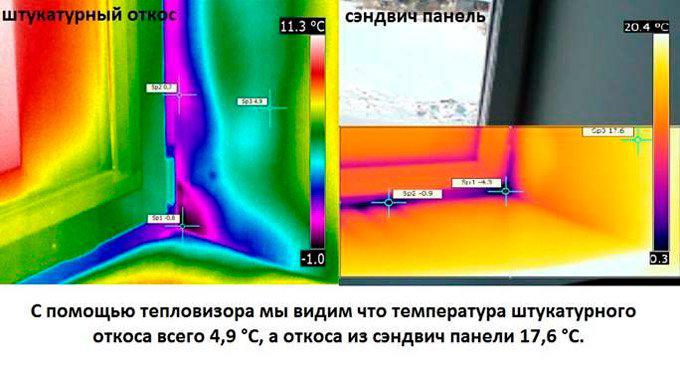

Varieties
To achieve an exceptionally strong abutment of the window frame with plaster, as well as to protect the frame during installation work, abutting profiles of 6 and 9 mm are used. Reinforcement strips are distinguished with and without fiberglass mesh. The first is used for outdoor work, the second is mainly used for finishing interior slopes.
Do you want to finish the slopes with high quality? Read our article on how to properly plaster window slopes without assistance.
Read about the pros and cons of stretch ceilings in this article.We carry out the insulation of the loggia with our own hands. Information at this address https://balkonsami.ru/uteplenie/stenyi/aktualnyie-metodiki-teploizolyatsii-svoimi-rukami.html
PVC profile with mesh
This is a classic version of the reinforcing profile: it is a shelf with a self-adhesive seal and a strong protective mesh. It has a tear-off bar that serves to adjoin the protective film, which protects the windows from possible dirt and scratches.
Thanks to its use penetration of moisture and mold is excluded... A very aesthetic element of decoration, which is a thin and even strip, which is framed by the window frame.
Tip: Work on the application of reinforcing elements should be done not earlier than a day after the creation of the heat-insulating belt.
PVC profile without mesh
An adjacent profile without a reinforcing mesh is used, as a rule, for interior work... However, this type of profile can also be used for external installation, provided that no additional reinforcement is used.
One of the most popular and high-quality protective strips of this type is a self-adhesive profile without a grid (9 mm) of the German BauKom brand. The adjoining profile without mesh facilitates the application of the plaster, ensuring uniform coverage and ease of installation.
Self-adhesive abutting profile with and without reinforcing mesh
The profile element can be supplemented with PVC corners with a mesh and an open drip profile. The first will help to provide additional protection for the arched vaults of the windows and strengthen the corners, the second - eliminates the possibility of moisture accumulation in the corner areas, provides a high degree of reinforcement of the plaster layer and minimizes the number of cracks.
Plastic windows: which window profile is better to choose
When choosing window profiles, you can get confused - the market presents such a large selection to buyers.
Which window profile is better to choose and why?
The choice is influenced by many factors, and one of the most important is the price.
However, there are many others to consider when choosing a profile.
Profile design
Insulating glass profile
The profile design differs from manufacturer to manufacturer.
In addition, the profile system also assumes some design differences.
For most manufacturers, the profile consists of two parts: a steel base and a plastic shell, but there are exceptions.
It is worth considering in detail the design of profiles of some manufacturers.
KBE
A German manufacturer of profiles with many distributors in Russia. The profiles of this company are based on a metal steel structure in the form of a U-shaped beam. Around this beam is a plastic sheath, which can be of different design in different series.
The U-shaped metal profile in frame profiles is facing downward, and in casement profiles - with the shelf upward, towards the double-glazed window. The design of the plastic shell can vary depending on the selected profile system. The fitting gutter is located closer to the outer part of the window sash. Plastic profiles are resistant to detergents and UV rays.
Proplex
Russian manufacturer of window profiles. In many ways, these profiles are the same as KBE profiles, but there are some differences. For example, the fitting gutter is located closer to the inner part of the window sash. Also, steel inserts are made of thicker metal, due to which the profiles have more weight.
Veka
The profiles of this company differ from the previous two. The reinforcing insert on the frame is made in the form of a square tube, and the insert in the sash is in the form of a corner.
Century Profile
This gives a slightly higher rigidity in the frame, but slightly less rigidity in the sash, which, however, is compensated for by the rigidity of the glass unit itself. The profile weight is about the same as that of similar systems from other manufacturers. The profile is produced in Germany. Some people complain that Veka windows turn yellow over time, but maybe they are just fake profiles.
Rehau
German manufacturer. The design of these profiles has the same reinforcing metal element as KBE and Proplex, but there is one difference - one of the sides of the U-shaped profile is twice as thick as the other, due to the fact that the metal is folded in half. Therefore, these profiles have slightly higher rigidity at the point of contact between the sash and the frame.
It is also worth noting that from the inside of the window, the profile extends quite far beyond the glass unit. On the one hand, this significantly increases the strength and burglary resistance, has a positive effect on thermal insulation, on the other hand, it reduces the clearance of the window itself, especially on small sashes. It is believed that Rehau profiles are of higher quality and more expensive than from other manufacturers.
Multi-chamber
When they ask themselves which window profile is better to choose, they often pay attention to such a characteristic as the number of cameras in the profile. This characteristic indicates how many individual compartments the profile section has. Usually, the more cameras, the higher the price. However, multi-camera does not always affect the quality.
Insulation of a double-glazed window
The number of chambers, if they are rationally located, will significantly affect the thermal insulation properties of the window.
At the same time, there are many other things that affect the thermal insulation properties much more strongly.
For example, the location of the gum and profile chambers.
In Rehau profiles, this elastic band is completely covered by the sash chambers, so the chambers are rationally located here.
In other cases, the profile, regardless of the number of chambers, will have significantly lower thermal insulation properties than others. Therefore, in the northern regions it is better to install Rehau profiles, despite the fact that they are more expensive.
The second function that multi-chamber performs is to increase the rigidity of the window frame. Rigidity affects many characteristics, in particular, the reliable operation of the hardware. The walls between the chambers function as stiffeners.
The rigidity is especially felt on large window frames. There, the use of multi-chamber profiles is preferable, since the fittings on them often fail due to insufficient rigidity of the sashes.
The third function that multi-chamber double-glazed windows perform is sound insulation. Here, too, not everything is so simple. Rehau profiles have the best sound insulation. However, the soundproofing ability of the profile itself is canceled out by the sound permeability of the glass unit itself.
The packages are installed on special pads designed to dampen strong noise and vibrations. Some window systems do this better than others. But windows cannot give one hundred percent protection against loud music outside the window and strong noise - the glass itself is permeable to noise.
Selecting a profile depending on the size of the window
Big windows
As already mentioned, multi-chamber profiles are significantly stiffer than others.
It is also worth paying attention to the design of the profile - profiles with a rectangular pipe are stiffer than similar U- and L-shaped ones.
In addition, the thickness and width of the window profile should be taken into account.
For a large window, it is desirable to have a larger profile itself.
However, any profile is suitable for standard apartment windows, even the cheapest one - if there is any violation of rigidity, this will be seen immediately and is almost always a warranty case.
More often violations occur with balcony doors, which are often opened and closed. If the owners of the apartment run to the balcony every five minutes to smoke, it is better to choose a more expensive and multi-chamber profile and better fittings.
Special attention should be paid to the profiles for panoramic roof windows. This is usually the most critical case when choosing a window profile. Window data:
- Are large
- May experience a snow load if the snow melt system does not function
- Are loaded in a direction uncharacteristic of conventional profiles
- The severity when opening the window is not distributed over two points of one profile, but is located at one point of the pipe of each of the profiles on which the hinge is installed
Some manufacturers produce special profiles for panoramic windows. If there is an opportunity to put them, it is imperative to do it. If not, then it is better to abandon panoramic windows altogether, or order them in another city.
Choice for a private home, office or shop on the ground floor
When deciding which window profile is best to choose in a private house on the ground floor, in a store or an office located near a busy street, the following factors must be considered:
- The proximity of the roadway - in houses on the upper floors, the noise is less audible than below.
- A busy street that people can walk on every day
- Possibility of installing the hood in a double-glazed window
- Possibility to install an air conditioner pipe
- Burglary resistance, strength when attempted vandalism
- Easy to clean
Damp resistance
Often the windows on the first floors are placed behind iron bars, so it is necessary that there are no blind sashes. Otherwise, it will be very difficult to wash the window - you will have to get off the street and wash through the bars. Or somehow stick your hand between the grate and the window, which is very inconvenient.
The installation of exhaust ventilation in the windows on the ground floor is necessary, since it is often impossible to open the windows to the street in the room because of the noise or poplar fluff, the danger that someone will climb into the wide open window unattended. However, ventilation is needed, and a small fan installed directly into the glass unit with the window closed will perfectly cope with this. It is desirable that the possibility of its installation was.
Which PVC profile is better - you can find out from the video:
Select it and press Ctrl + Enter to tell us.
Source: https://FoxRemont.com/remont/openings/slopes/kakoj-okonnyj-profil-luchshe-vybrat.html
